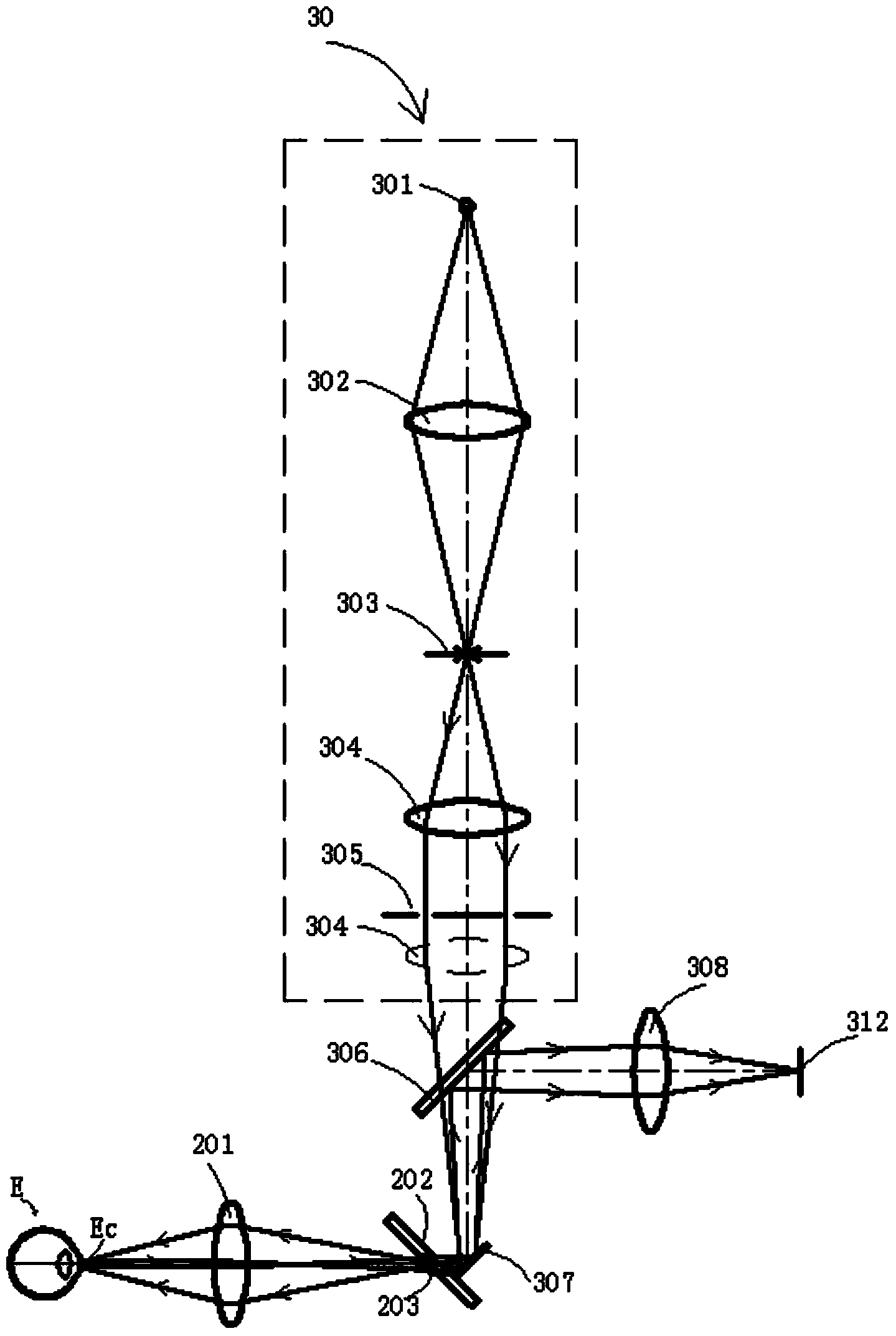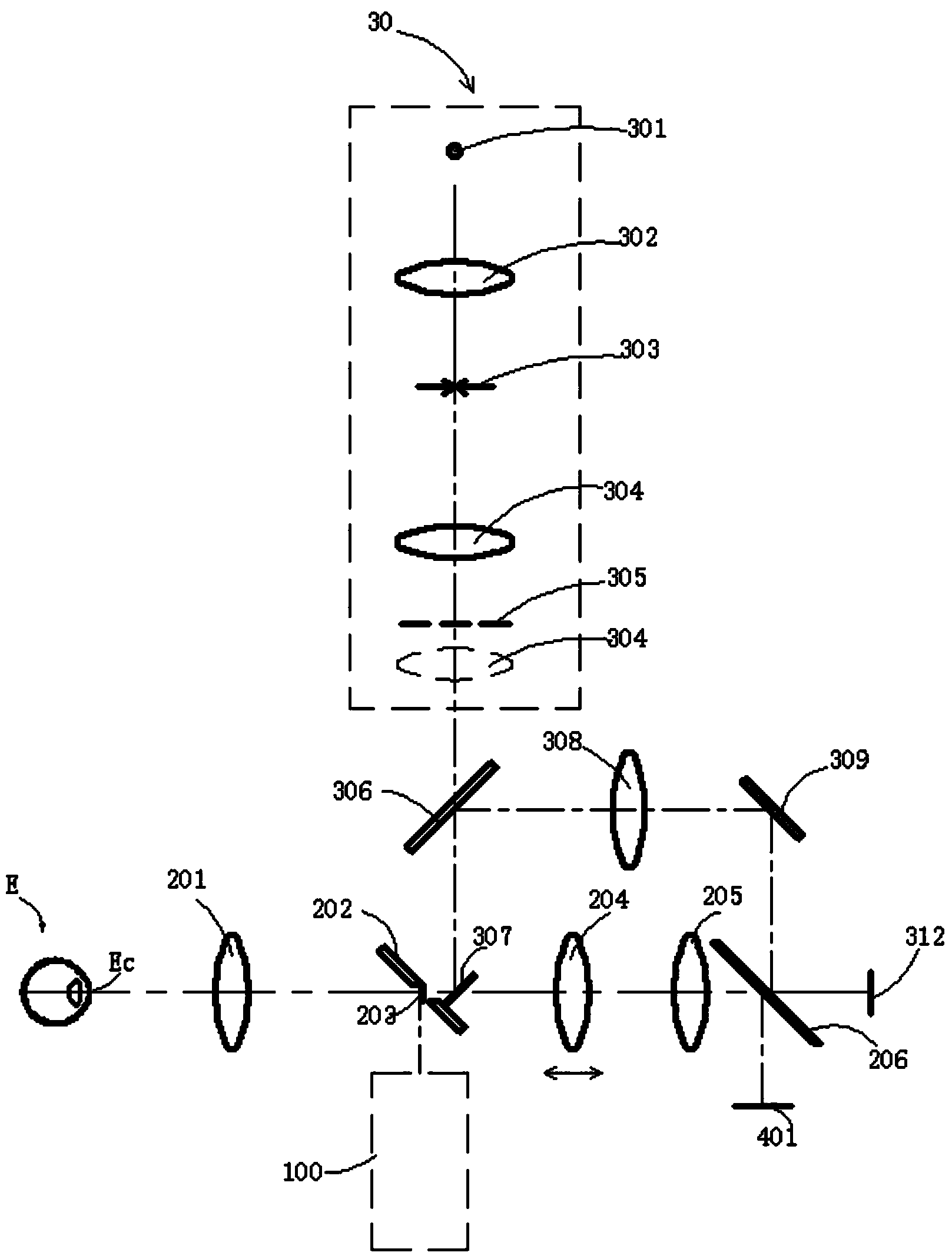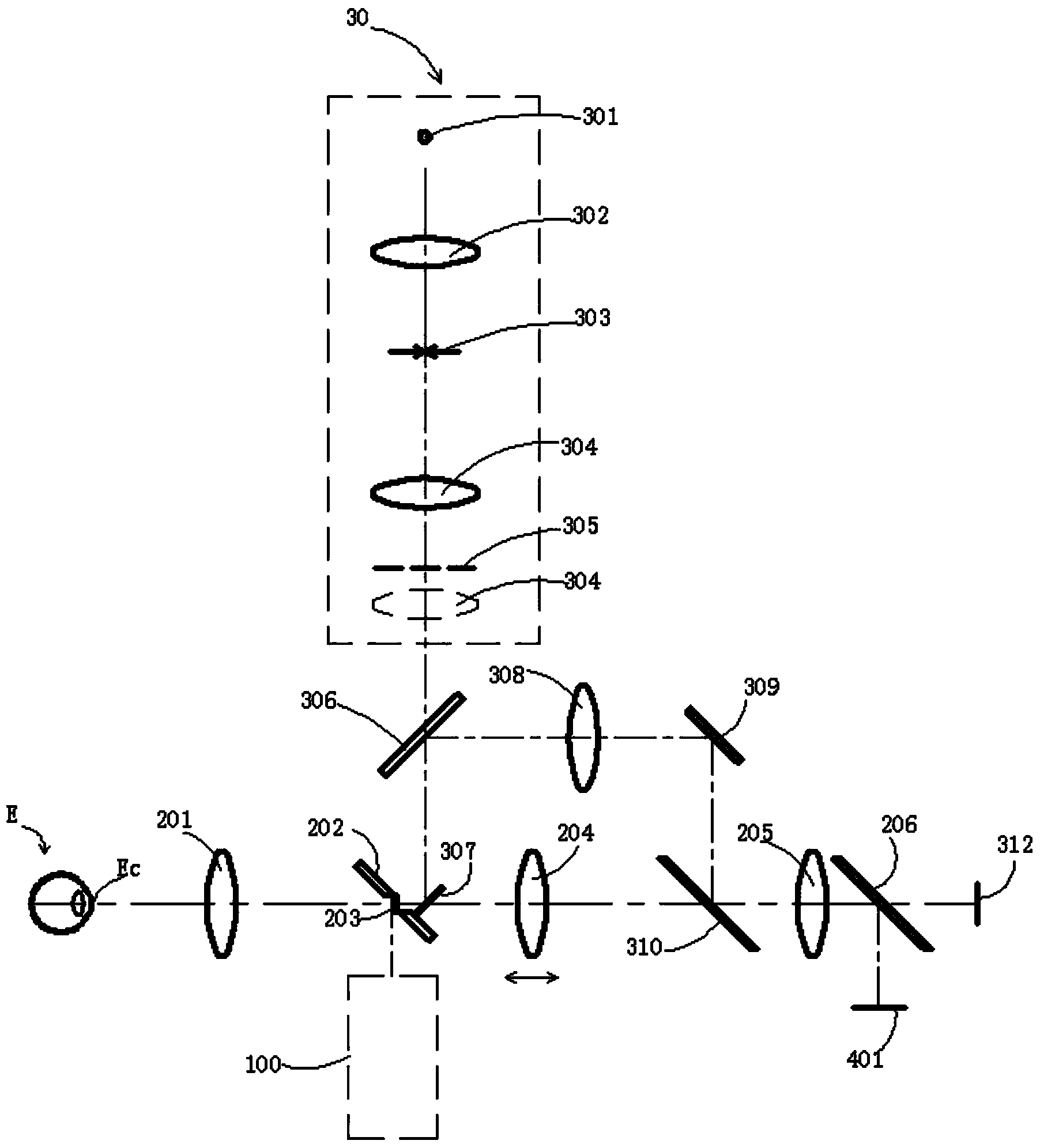Fundus camera optical system for aligning working positions of human eyes and position aligning method
A technology of working position and optical system, which is applied in the field of optoelectronics, can solve problems such as the inability to achieve precise alignment of the working position of the human eye
- Summary
- Abstract
- Description
- Claims
- Application Information
AI Technical Summary
Problems solved by technology
Method used
Image
Examples
Embodiment 1
[0056] refer to figure 2 , figure 2 The optical system of the fundus camera includes alignment light path, illumination light path, imaging light path and gaze light path.
[0057] In this embodiment, aligning the optical path and figure 1 The difference in the alignment optical path is that a total reflection mirror 309 and a third beam splitter 206 are also provided between the receiving lens 308 and the camera device 312 . The total reflection mirror 309 reflects the first light beam and the second light beam reflected by the cornea from the receiving lens 308, and passes the first light beam and the second light beam to the third beam splitter 206. 312, the camera device 312 displays two superimposed light spots produced by focusing on the first light beam and the second light beam after the probe is adjusted. The observer can observe the two superimposed light spots. It is judged that the apex of the cornea is in the working position of the fundus camera.
[0058] I...
Embodiment 2
[0063] refer to image 3 The difference between this embodiment and the first embodiment is that a fourth dichroic mirror 310 is further provided between the deflection mirror 204 and the imaging lens 205 . The gazing light sent by the fixation point display screen 401 is reflected by the third beam splitter 206, passes through the imaging lens 205 successively, is fully transmitted through the fourth beam splitter 310, and then passes through the deflection mirror 204, the second beam splitter 307, and the embedded device. The aperture reflector 202 and the eye-connecting objective lens 201 of the first aperture diaphragm 203 reach the fundus of the human eye. Another function of the fourth beam splitter 310 in this embodiment is to fully reflect the first light beam and the second light beam from the total reflection mirror 309 after being reflected by the cornea.
[0064] Similarly, in this embodiment, the white light flash and near-infrared illumination light emitted by t...
Embodiment 3
[0068] refer to Figure 4 The difference between this embodiment and the first embodiment is that the imaging optical path of the fundus camera is divided into white light flash photography imaging and infrared preview fundus imaging. The white light flash photography imaging optical path is the same as that of the first embodiment, but the infrared preview fundus imaging optical path does not share the imaging device 207 .
[0069] In this embodiment, the propagation path of the alignment optical path is as follows: the first light beam and the second light beam generated by the double beam generating device 30 are partially transmitted through the first beam splitter 306, and then completely reflected by the second beam splitter 307, and the first beam and the second light beam pass through the first aperture diaphragm 203, and then enter the human eye through the eye lens 201, and are reflected by the cornea. After passing through the eye lens 201, the two emitted light bea...
PUM
 Login to View More
Login to View More Abstract
Description
Claims
Application Information
 Login to View More
Login to View More - R&D
- Intellectual Property
- Life Sciences
- Materials
- Tech Scout
- Unparalleled Data Quality
- Higher Quality Content
- 60% Fewer Hallucinations
Browse by: Latest US Patents, China's latest patents, Technical Efficacy Thesaurus, Application Domain, Technology Topic, Popular Technical Reports.
© 2025 PatSnap. All rights reserved.Legal|Privacy policy|Modern Slavery Act Transparency Statement|Sitemap|About US| Contact US: help@patsnap.com



